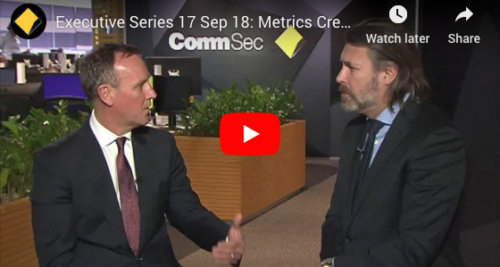Asset allocation in turbulent times

Australian investors are currently facing a conundrum when it comes to their asset allocation. With low rates and persistent low growth, finding reliable sources of return is becoming an increasingly difficult task.
Australia is in the lowest interest rate environment in history, with the official cash rate now at 0.75 per cent per annum. Rhetoric from the Reserve Bank of Australia (RBA) indicates that investors should prepare for an extended period of low rates, driven by stagnant wage growth, low inflation and high levels of household debt.
Against this backdrop, 10-year government bonds are trading very close to 1 per cent and the returns from cash and term deposits are insufficient for most investors.
This low rate, low growth environment is an issue for investors seeking to grow their assets and for those who are relying on their investments to generate an income, such as retirees. As a result, many investors are looking beyond the traditional asset classes for potential sources of growth and income.
Australia is in the lowest interest rate environment in history, with the official cash rate now at 0.75 per cent per annum. Rhetoric from the Reserve Bank of Australia (RBA) indicates that investors should prepare for an extended period of low rates, driven by stagnant wage growth, low inflation and high levels of household debt.
Against this backdrop, 10-year government bonds are trading very close to 1 per cent and the returns from cash and term deposits are insufficient for most investors.
This low rate, low growth environment is an issue for investors seeking to grow their assets and for those who are relying on their investments to generate an income, such as retirees. As a result, many investors are looking beyond the traditional asset classes for potential sources of growth and income.
TYPES OF FIXED INCOME
In times of market uncertainty, increasing portfolio allocations to defensive investments such as fixed income is a popular strategy for both preserving capital and generating income. This is because fixed income assets typically have a low correlation to growth assets such as equities and property, meaning they perform better in down markets.
The most well-known types of fixed income are government bonds and corporate bonds – debt securities issued by governments and corporations and sold to investors. However, there is also a larger but lesser-known subsector of fixed income – corporate loans.
Corporate loans are loans given to companies for various purposes, such as funding working capital requirements, expanding and purchasing assets, completing specific projects or for commercial property acquisition or development purposes. These loans are an excellent way for businesses to focus on their growth and generate more revenue.
This type of loan was traditionally provided to companies by the banks. However, this has changed as regulation has driven up the cost of bank funding, providing opportunities for non-bank lenders such as Metrics to fill the void.
The Australian corporate debt market is currently worth $963 billion and these types of loans make up 75 per cent of the Australian corporate debt market, meaning there are ample opportunities for investors to tap into the current high demand for lower cost, non-bank funding.
HOW CORPORATE LOANS CAN HELP YOUR PORTFOLIO
Corporate loans can be considered a defensive investment because they provide income and capital stability, with a number of built-in protections for investors. Floating interest rates provide protection against inflation and loans are often secured and contain controls such as lending covenants which are negotiated to manage the risk.
In addition, lenders in the market typically undertake rigorous due diligence before lending and ongoing engagement with borrowers is maintained throughout the loan term to assess risks.
Another key benefit of the corporate loan market is its size and diversity. Opportunities range from lower risk senior unsecured investment-grade debt investments all the way through to secured loans to sub-investment grade borrowers or higher risk investments such as subordinated or mezzanine loans that offer the potential for higher yields. Given where debt sits within the capital structure of a company all such debt transactions present a lower risk investment compared with direct equity investment.
As a result, we believe corporate loans offer opportunities for many different types of investor as part of a defensive portfolio allocation.
ACCESSING THE CORPORATE LOAN MARKET
While traditionally corporate loans were only available to wholesale investors, in recent years select opportunities have become available to investors such as retail or self-managed superannuation fund investors in the Australian market.
For investors considering an allocation to corporate loans, we believe portfolio diversification is important – helping spread risk by investing in a varied range of sectors, loan types, borrowers with differing maturity profiles.
For investors considering a capital allocation to the corporate loan market, it is also important to seek out an experienced manager that can generate a pipeline of sufficient high-quality transactions and mitigate risks by appropriately vetting and pricing individual transactions.
However, with diversification and the right management, we believe the corporate loan market is well worth considering for investors seeking sources of regular income in a low growth and low interest environment.
Andrew Lockhart, Metrics Credit Partners – 25 February 2020
Other News
Metrics Innovate Reconciliation Action Plan
We are proud to share our second Reconciliation Action Plan (RAP), reaffirming our commitment to truth, healing and unity. We…
Metrics response to ASIC’s report on Advancing Australia’s Evolving Capital Markets
Attributable to Metrics Group CEO and Managing Partner, Andrew Lockhart: Metrics Credit Partners (“Metrics”) welcomes ASIC’s roadmap to promote strong,…
INSIGHTS
MCP Income Opportunities Trust (MOT) lists on ASX
Sydney, 29 April 2019: The Trust Company (RE Services) Limited (ABN 45 003 278 831) (Responsible Entity) is the responsible…
MCP Master Income Trust wins Lonsec Listed Fund Award
The award came a year after MXT was listed on the Australian Securities Exchange






